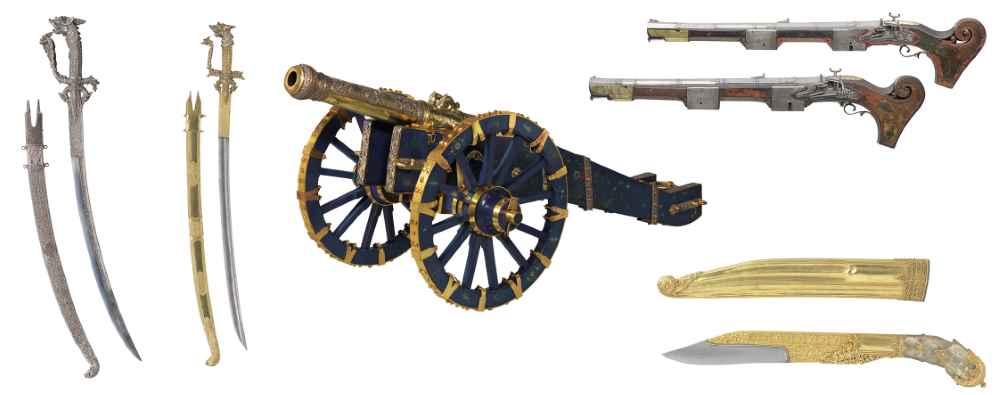
A significant milestone in the intricate tapestry of international relations was woven as a collaborative research endeavour that bridged the historical gap between Sri Lanka and the Netherlands. Six remarkable artefacts, long ensconced in the renowned Rijksmuseum collection in the Netherlands, underwent meticulous scrutiny, leading to a revelation that would reshape the diplomatic landscape between these two nations. In a historical development, six rare Kandyan artefacts have returned to Sri Lanka after over two centuries. These precious items, including golden and silver kasthãné, a golden knife, two maha thuwakku or wall guns, and Lewke Disave’s cannon, were originally acquired as war booty by the Dutch East India Company in 1765 during the siege of the Palace of Kandy. Accordingly, they will be displayed for the public in the special exhibition gallery at the Colombo National Museum from 5 December onwards.
The journey to reclaim these invaluable pieces began with collaborative international provenance research conducted in April 2022, confirming their Sri Lankan origin. A diplomatic request from Sri Lanka’s Minister of Buddhasasana, Religious, and Cultural Affairs, Mr Hon. Vidura Wickramanayake, was instrumental in this process.
Mrs. Sanuja Kasthuriarachchi, the Director General of the Department of National Museums, explained, “This historic return underscores the importance of international cooperation in preserving cultural heritage and fostering knowledge sharing and education.”
The research, conducted under the Pilot Project Provenance Research on Objects of the Colonial Era (PPROCE) serves as a landmark in provenance studies. The artefacts return and the ensuing cultural cooperation between Dutch and Sri Lankan institutions mark a significant step toward future collaborations and returns of Sri Lankan treasures.



